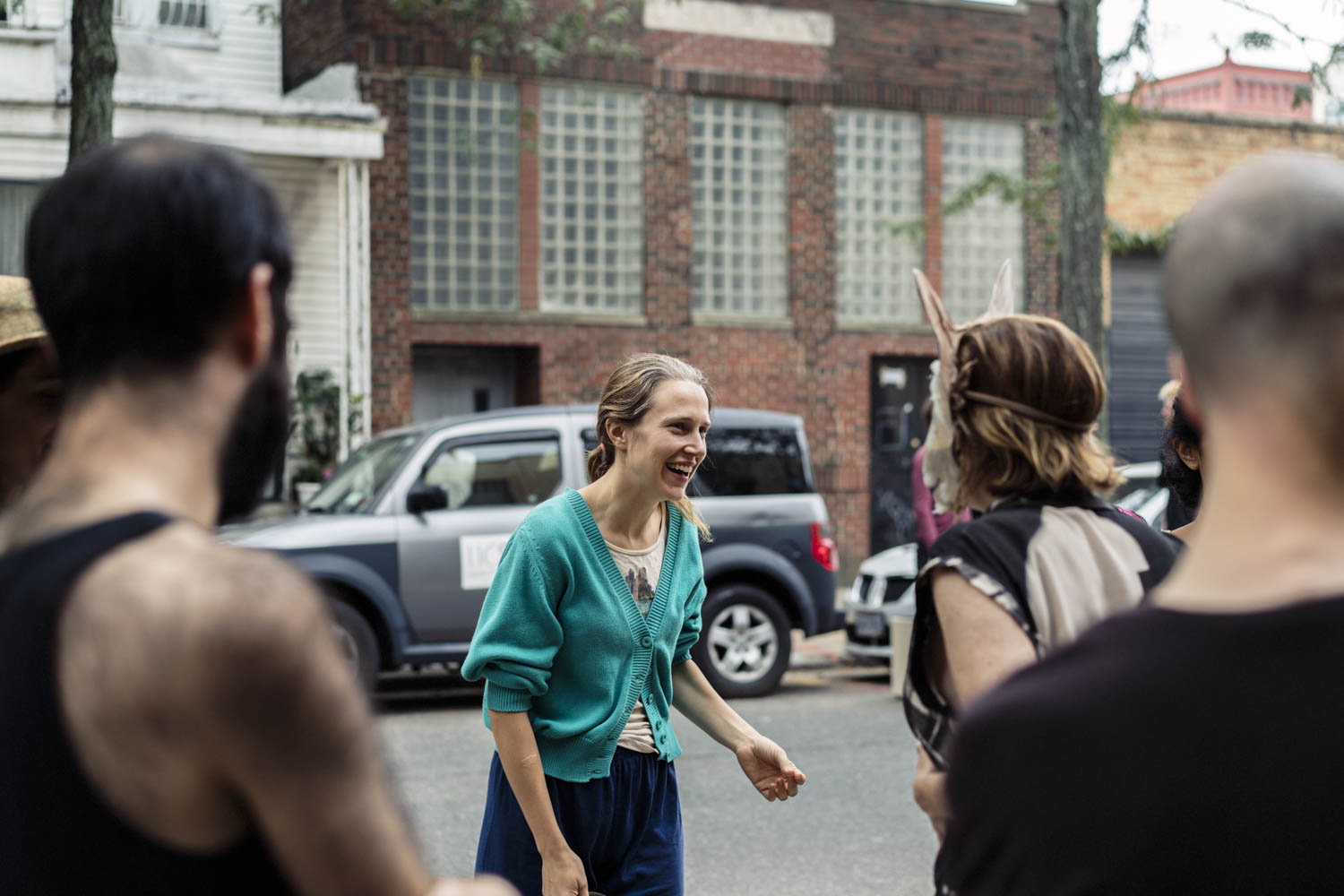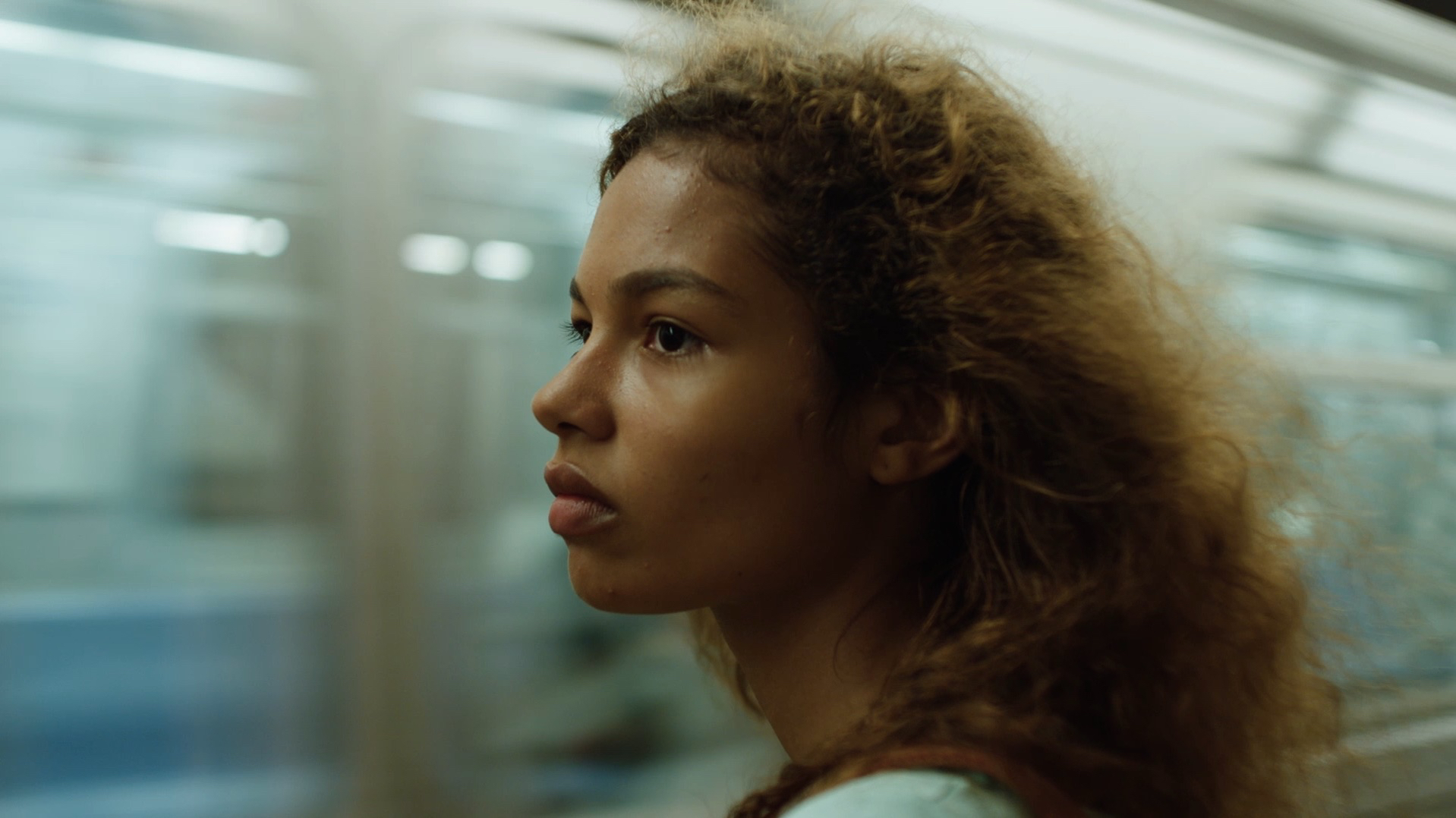Madeline’s Madeline is an indie directed by a woman (Josephine Decker), about women (men are relegated to brief roles), shot by a female cinematographer (Ashley Connor). In plain English: all that estrogen on a film set is refreshing. IndieWire’s resident enthusiast David Ehrlich called it “one of the boldest and most invigorating American films of the twenty-first century,” and tough-to-please New Yorker classicist Richard Brody has compared Decker’s style to that of Wes Anderson and Terrence Malick: “ecstatic, essential, invigorating, inspiring, and inimitable.” Every MM review thus far has praised newcomer Helena Howard, the fearless nineteen-year-old in the titular role (shout-out Lady Bird).
The movie tails a single mother (Miranda July) living in New York City with her teenage daughter Madeline (Howard) and a cat, who oversees their domestic disputes. Madeline has some type of undisclosed mental illness, causing her to skip meals and sanitize her hands obsessively, plus there are allusions to a stay in a psychiatric ward. She’s also a burgeoning actress and the youngest member of an improv theater troupe, where she is routinely encouraged by director Evangeline (Molly Parker) to use her real life as fodder for inspiration.
Decker’s breed of storytelling is abstract, primitive, visceral; told in splintered shots, fractured dialogue, animalistic grunts and choirs of phantom voices. As for plot, she spent eight months workshopping ideas with a group of New York actors, transcribing the best of their improvisations. The story is still hazy; it’s unclear whether Madeline is meant as a reliable narrator, and each scene unfolds with equal potential to be a dream, a fact, or an acting exercise. In leading the pre-production rehearsals, Decker sought help from Philly-based Pig Iron Theatre, a group she hooked up with during her years at Princeton. From observing Pig Iron’s methods, she discovered that “actors could be more than just puppets for directors,” as she puts it. “They were writing alongside the creators.”
As for the film’s center—the still point of the turning world—Decker found unknown Helena Howard at a teen arts festival reciting a monologue from David Harrower’s play Blackbird. “It was the most riveting performance I had ever seen, period, in my life,” Decker recalls. “It was obvious to me I had to work with this young person. Something Helena and I have in common is we both use our art as a way of making our lives make sense. We felt that commonality.”
“It was obvious to me I had to work with this young person. Something Helena and I have in common is we both use our art as a way of making our lives make sense.” — Josephine Decker
Howard as Madeline zips across the screen with a wide, perfect smile and a lustrous frizz of brown hair. Under the pretense of being a sea turtle, she lugs her heavy shell through the sand; as a cat, she purrs and kneads her mom, who plays along by scratching her daughter’s faux-fur tummy. Miranda July in the mother role is odd as ever, though probably more fragile than we’ve ever seen her. At times frightened by her wild spawn and at other points protective, it’s apparent she doesn’t know quite how to handle Madeline either way.
“She’s great, but to be honest she was intimidating to me,” Howard says of veteran performer July. “One, because of her eyes: They’re just this beautiful, water-crystal blue that goes straight to your soul and steals it. And because she’s so petite, you feel like she could never hurt you… But she can. She also has this deadpan humor where you don’t know if she’s being funny or sarcastic or mean. She’s like, insulting you, but it goes over your head, then comes back and hits you in the back of your head. That’s her humor.”
Howard hasn’t taken any “serious” acting classes, though she did attend a performing arts middle and high school. Following production on Madeline’s Madeline in 2016, she enrolled in a conservatory program, but dropped out after one year. “What I learned at the conservatory—which is why I left—was these structured spaces,” she tells me. “Some places try to mold people into an idea of what they think an actor should be. But being an actor is innate, it’s organic, it’s spontaneous, it’s truthful, it’s being present in circumstances.”

Josephine Decker on set
Howard is chasing instinct as Madeline, fresh-faced and unprecedented, a whirling dervish. She’ll remind you why acting is the easiest route back to childhood: playing dress-up, impersonating professions you’ll never have, low-stakes use of imagination. Howard says she intended Madeline to be universal—not your “typical teen,” but rather a character infinite in age, a vessel, easy to project your feelings onto.
Madeline’s theater director Evangeline grooms her charge, assuming both a maternal and a bloodsucking function. She draws from the girl’s strained personal history to craft what she hopes will be a profound, immersive theater experience, blurring the lines between art and reality in the madcap vein of Synecdoche, New York. At times, art necessitates exploitation or the co-option of other people’s stories, an easier steal in today’s digital landscape where everyone’s pain is up for grabs on social media. But when Madeline is hesitant to expose her mental illness or private life with her mother, Evangeline pushes.
“Some places try to mold people into an idea of what they think an actor should be. But being an actor is innate, it’s organic, it’s spontaneous.” — Helena Howard
The power imbalance between a forceful director and an unsuspecting or overeager actor is an industry cliché under intense scrutiny of late. Historically, these puppet masters have been mostly male, with female muses: Alfred Hitchcock tormenting Tippi Hedren, Lars Von Trier harassing Björk, Bertolucci purposefully humiliating Maria Schneider, even Quentin Tarantino pushing Uma Thurman into a stunt. Howard is no stranger to these inclinations: “You have to know your boundaries,” she says. “You have to know if it’s worth it or not. Especially if it’s demoralizing… That can be traumatic. As actors, we always want to please other people, especially the director. It’s their vision we’re bringing to life. It’s so hard to say no.”
Plenty of directors push, and some of the pushiest are lauded geniuses, the auteurs. But others consider the possibility of coaxing a raw performance from an actor without prodding them, unwillingly, toward their breaking point. Decker craves collaboration instead of control. (Perhaps unsurprisingly, studies show women are better at collaborative work than men, and in governing they’re more bipartisan.) It’s difficult to imagine certain cinematic titans relinquishing their solipsistic, singular vision in favor of an actor’s comfort or insight. Decker, on the other hand, doesn’t mind sharing the glory. “The process of making this taught me a lot about the actor-director relationship,” Decker says. “Getting a ‘great performance’ is a lot about liberating, giving permission. Creating a safe enough space that the actor can do dangerous things.” FL









